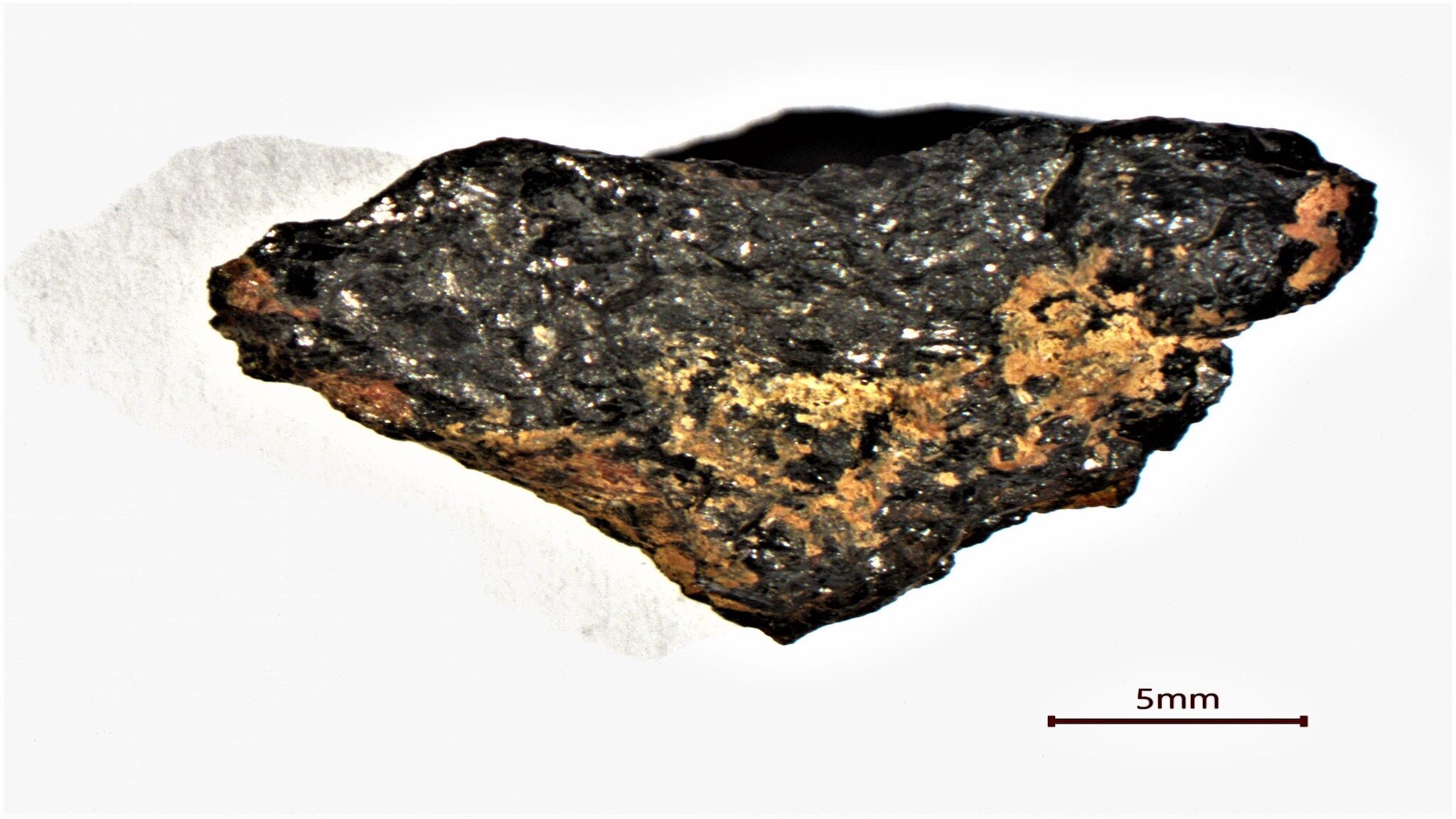Alien stone in Egyptian desert came from rare supernova, scientists say
The rock likely came from one of the brightest types of cosmic explosions

A strange extraterrestrial space rock unearthed in the Sahara Desert could be the first evidence on Earth for a rare type of supernova.
The chemical composition of the Hypatia stone, which was first discovered in Egypt in 1996, suggests it may contain dust and gas that once surrounded an enormous type of supernova, the spectacular explosion of a dying star.
Type Ia supernovas typically take place inside dust clouds where a white dwarf, or the shriveled husk of a collapsed star, shares an orbit with a larger, younger star that still has some fuel to burn. The smaller and denser white dwarf uses its immense gravitational pull to snatch some of the younger star’s fuel, which it gorges on relentlessly, stretching the younger star into a teardrop shape. The act of cosmic canniblism eventually ends in mutual destruction, however, as the vampiric white dwarf grows large enough for nuclear reactions to reignite in its core. After a sudden bright flash, an enormous supernova blast hurls the irradiated contents of both stars outwards to mingle and merge with the dust.
Related: 11 fascinating facts about our Milky Way galaxy
In the case of the Hypatia stone, the cocktail of dust and gas likely drifted through space over billions of years until it arrived in our cosmic backyard, eventually solidifying into the larger parent body of the Hypatia stone sometime during the birth of our solar system, the new research suggests. Once formed, likely somewhere in the outer solar system, the rock eventually hurtled to Earth, shattering into fragments as it landed.
"In a sense, we could say, we have caught a supernova Ia explosion in the act, because the gas atoms from the explosion were caught in the surrounding dust cloud, which eventually formed Hypatia's parent body," study lead author Jan Kramers, a geochemist at the University of Johannesburg in South Africa, said in a statement.
To figure out where the rock came from, the researchers performed a chemical analysis of a tiny sample of the Hypatia stone using non-destructive techniques. These revealed that the rock had unusually low amounts of silicon, chromium and manganese — elements that are rare in the inner solar system — while also having abnormally high levels of iron, sulfur, phosphorus, copper, and vanadium for objects in our cosmic neighborhood.
Sign up for the Live Science daily newsletter now
Get the world’s most fascinating discoveries delivered straight to your inbox.
"We found a consistent pattern of trace element abundances that is completely different from anything in the solar system, primitive or evolved. Objects in the asteroid belt and meteors don’t match this either," Kramers said.
Further tests, which compared the rock’s element concentrations with those we’d expect to see in our region of space, came back with even more surprising results — the stone wasn’t even from our arm of the galaxy, and it had too much iron, too little silicon, and too low a concentration of elements heavier than iron to have come from a solo red dwarf explosion (a type II supernova).
An exhaustive search of star data and modeling left the team with no other likely explanation for the rock’s origin than a type Ia supernova, which would explain the stone's unusual element concentrations. The ratios of eight of the 15 elements analyzed by the researchers (silicon, sulfhur, calcium, titanium, vanadium, chromium, manganese and nickel) fit very closely to the concentrations predicted for a white dwarf explosion.
"If this hypothesis is correct, the Hypatia stone would be the first tangible evidence on Earth of a supernova type Ia explosion," Kramers said. "Perhaps equally important, it shows that an individual anomalous parcel of dust from outer space could actually be incorporated in the solar nebula that our Solar System was formed from, without being fully mixed in."
But doubts still remain. Six of the stone’s elements — aluminum, phosphorus, chlorine, potassium, copper, and zinc — are present at concentrations that ranged from 10 to 100 times what would be expected for a type Ia supernova. The researchers think this could point to the supernova’s origins as a red giant star that preserved more of its original elemental composition than the models predicted.
"Since a white dwarf star is formed from a dying red giant, Hypatia could have inherited these element proportions for the six elements from a red giant star. This phenomenon has been observed in white dwarf stars in other research," Kramers said.
The scientists published their findings on the weird alien rock in a forthcoming issue of the journal Icarus.
Originally published on Live Science.

Ben Turner is a U.K. based staff writer at Live Science. He covers physics and astronomy, among other topics like tech and climate change. He graduated from University College London with a degree in particle physics before training as a journalist. When he's not writing, Ben enjoys reading literature, playing the guitar and embarrassing himself with chess.









